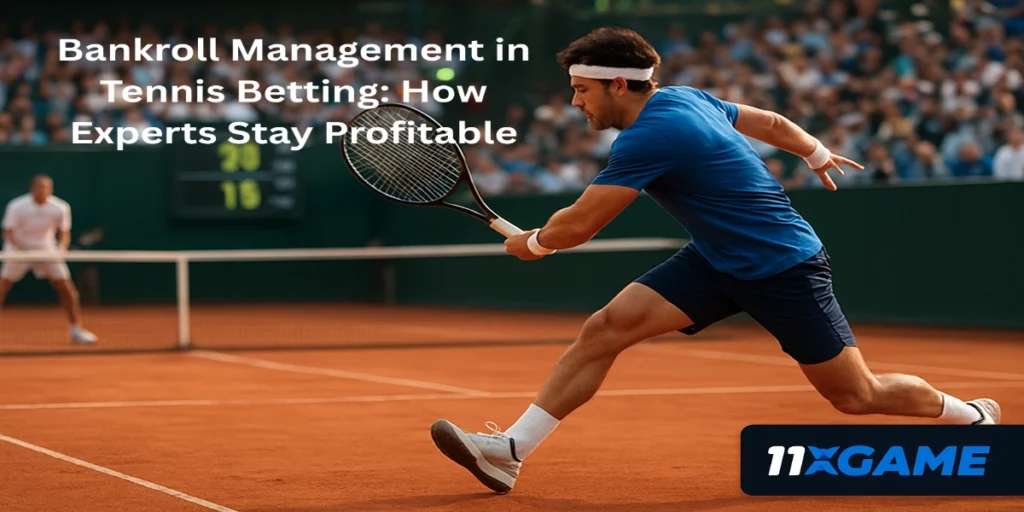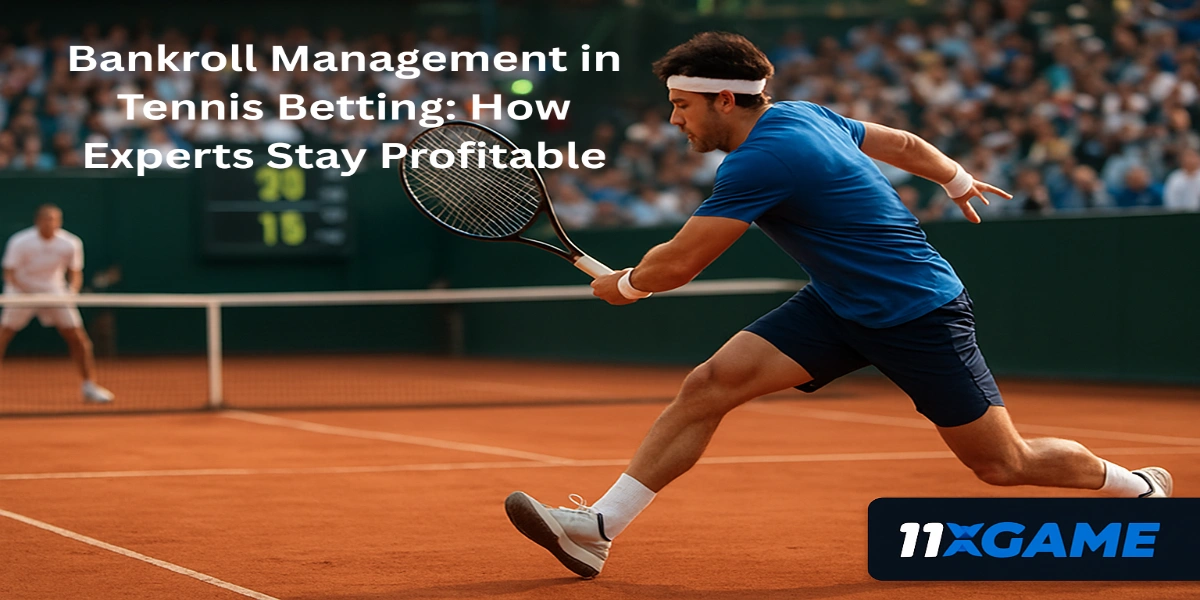Bankroll Management in Tennis Betting: How Experts Stay Profitable
Introduction
In the world of sports betting, especially in a fast-paced sport like tennis, it’s not just about picking winners. Many bettors focus all their energy on analyzing matches, studying form, or predicting outcomes — yet they still lose money in the long run. The reason? Poor bankroll management.
Bankroll management is the backbone of profitable betting. Even the best strategies fall apart without discipline in handling money. Experts who survive and profit from tennis betting over the long term treat their bankroll like an investment portfolio, carefully balancing risk and reward.
In this detailed guide, we’ll break down why bankroll management matters, proven techniques experts use, common mistakes to avoid, and how you can apply these lessons to become a smarter tennis bettor.
Why Bankroll Management Matters in Tennis Betting
Unlike team sports, tennis has constant momentum shifts and live in-play opportunities. This makes it tempting to place more bets than planned. Without a structured approach, bettors fall into traps such as:
- Chasing losses when predictions fail.
- Over-betting when confident in a favorite player.
- Emotional decisions after seeing live odds fluctuate.
Proper bankroll management ensures:
- Long-term survival – Prevents you from going broke during losing streaks.
- Consistent growth – Small, disciplined wins compound over time.
- Reduced stress – Betting feels less like gambling and more like calculated investment.
Experts know that profits in tennis betting don’t come from one big win — they come from playing the long game with controlled risk.

Setting Up Your Bankroll
The first step is creating a dedicated betting bankroll. This is money set aside strictly for betting, separate from your savings or daily expenses.
1. How Much Should Your Bankroll Be?
- Only use money you can afford to lose.
- A starting bankroll can be as small as $200 or as large as $5,000, depending on your budget.
2. Defining a Unit
Experts divide their bankroll into “units.” A unit is the standard size of your bet.
- Common Rule: 1–2% of your total bankroll = 1 unit.
- Example: With a $1,000 bankroll, one unit is $10–$20.
This ensures consistency and prevents reckless betting when emotions run high.
Staking Strategies in Tennis Betting
Once your unit size is set, the next step is deciding how much to stake on each bet. Experts commonly use:
1. Flat Betting
- Betting the same unit amount on every wager.
- Example: Always betting $20 per match regardless of confidence.
- Pros: Simple, safe, limits losses.
- Cons: Doesn’t maximize big opportunities.
2. Variable Betting
- Adjusting bet size based on confidence or edge.
- Example: 1 unit on medium confidence bets, 2–3 units on strong confidence bets.
- Pros: Optimizes profits when analysis is strong.
- Cons: Requires experience and discipline to avoid bias.
3. Percentage Staking
- Betting a percentage of current bankroll.
- Example: 2% of bankroll per bet — bankroll grows/shrinks with results.
- Pros: Flexible, adapts to bankroll size.
- Cons: Can slow growth if bankroll is small.
4. Kelly Criterion (Advanced)
- A mathematical formula used by professionals to maximize growth.
- Suggests bet size based on probability edge and odds offered.
- Pros: Optimizes profits long-term.
- Cons: Requires accurate probability estimation — risky for casual bettors.
Tracking Tennis Bets Like a Professional
Experts don’t just bet and forget — they track everything. Keeping records allows you to identify strengths, weaknesses, and trends.
Track these details:
- Player, tournament, and surface.
- Odds taken vs closing odds.
- Unit size staked.
- Result (win/loss).
- Profit/loss in units.
Over time, patterns emerge. For example, you might discover you perform better betting on clay-court matches or when analyzing underdog markets.
Psychological Aspects of Bankroll Management
Managing money is as much about mindset as it is about math. Here’s how psychology impacts betting:
1. Avoiding Tilt
Tilt is when emotions cloud judgment, leading to reckless bets after a loss. Experts avoid tilt by:
- Taking breaks after losses.
- Sticking to unit limits no matter what.
2. Discipline Over Excitement
Big wins can make you overconfident. Experts treat betting as a grind, not a thrill ride.
3. Patience with Growth
Successful tennis bettors know growth is slow and steady. They don’t expect to double their bankroll overnight.
Common Mistakes in Bankroll Management
💡 Many bettors fail not because they lack knowledge of tennis, but because they mismanage money.
- Over-staking on favorites – Betting too much because odds seem “safe.”
- Chasing losses – Increasing bet size to recover quickly, often leading to bigger losses.
- Mixing personal finances – Using rent or grocery money for betting.
- Ignoring bankroll tracking – Not knowing actual profit/loss.
- Betting impulsively during live play – Forgetting pre-planned strategies when odds change rapidly.
Expert Tips for Bankroll Success in Tennis Betting
- Use multiple bookmakers to get the best odds, maximizing returns.
- Specialize in certain tournaments or players instead of betting everything.
- Set stop-loss and stop-win limits to know when to walk away.
- Review performance monthly to refine strategy.
Responsible Betting Reminder
(This article is for informational purposes only. Gambling involves risk. Please bet responsibly. Always check local laws before playing & follow the law.)
Final Thoughts
Bankroll management is what separates casual tennis bettors from consistent winners. While analyzing player stats, surfaces, and match-ups is important, the real secret to long-term success lies in discipline, structure, and patience.
Experts treat bankrolls like investments: they diversify bets, size them smartly, and always play the long game. If you want to bet on tennis successfully in 2025 and beyond, focus not only on who to bet on but also how much and when to bet.
FAQs
Q1. What is the safest staking strategy for beginners in tennis betting?
Flat betting (1–2% of bankroll per wager) is the safest for new bettors since it avoids overexposure.
Q2. Should I use Kelly Criterion for tennis betting?
It’s powerful but risky. Use it only if you’re experienced in accurately estimating probabilities.
Q3. How do I recover from a losing streak?
Stick to unit sizes, don’t chase losses, and review your strategy for errors instead of betting recklessly.
For more educational resources and responsible gaming tips, visit 11xGame to stay informed and safe while enjoying your favorite sports.






